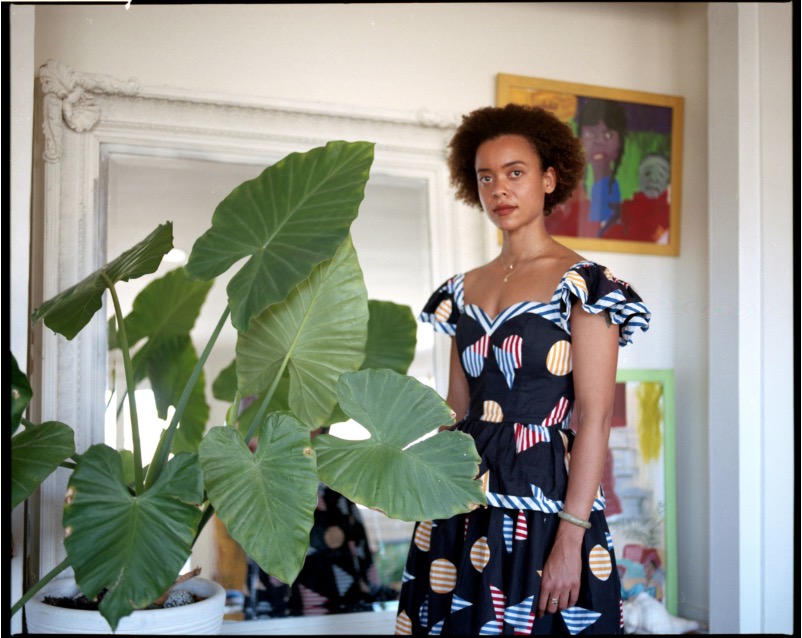Artist Cassi Namoda and the Cinematic Image

Cassi Namoda was born in Maputo, Mozambique. She grew up traveling the world and now splits her time between Los Angeles and East Hampton. Lusotropicalism, which Namoda has been exploring in her work, is a double-edged sword of sorts. The idea was first suggested by Brazilian sociologist Gilberto Freyre in the early 20th century to describe the distinctive character of Portuguese imperialism, specifically within the African diaspora, and proposes that the Portuguese were better colonizers than other European nations. Questioning whether or not colonialism can be better or worse is a daring task to take up within the form of painting. Namoda—who has abstracted the term to make it “more of a style or sort of contemporary consciousness”—does not disappoint.
I’m not entirely surprised when she tells me she started out studying film alongside her interest in literature, and that over time she moved into painting. Namoda’s work recalls a film you think you may have seen, still frames pulled directly from the middle of a scene. With strong narrative compositions, figures with gazes that break the fourth wall enveloped in a haunting darkness, her paintings are refreshingly not painted from existing images. They present as a sort of simulacrum of her memory, travels and African films she saw growing up across the African continent.
I’m thinking about the African experience and then the Black experience through the lens of filmmaking… But then the narrative shows up in the paint. I’m thinking about the history of painting and who took agency over that.
Namoda was deep in preparation for her fall exhibition with Nina Johnson Gallery in Miami when we first met this past summer. She was painting in rigorous studio sessions, wearing elegantly tailored vintage dresses fit for a lead in the most classic of romantic African cinema. Her paintings are considerate of the peripheries of angst, longing, passion and love. The presence of a time before and what is yet to come sits within her work. Characters are often gazing at you, away from you, implicating you within their narrative constructions.
I’m thinking about the drama. I’m thinking about the acting and what that meant for the beginning of when Black figures were showing up in film and reaching to the world. I thought they were so classic and so beautiful. Sometimes you can’t get that with a sitter in front of you.
The agency Namoda takes within her work, regarding her relationship to her investigation of the residues of lusotropicalism, supports and furthers the retention of her cultural heritage and puts it back in its place—deeply embodied and not able to be taken away unless you are of it. Her paintings create a withholding of a subjectively retention and an inherited copyright of lived experience.
Namoda’s upcoming exhibition is titled “The Day a Monkey’s Destined to Die All Trees Become Slippery”—which she says means there’s no escaping one’s fate. It opens in mid-2019 at Ghebaly Gallery in LA.
by Tiona Nekkia McClodden
Photographed by: Brandon Stanciell
To read this article in Cultured Magazine, click here.